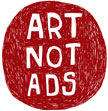2.14.2008
At first glance, I love the idea behind Pixish - a website where amateur designers can compete to have their work selected by various clients through their proposed projects. At first glance, it seemed like a great, logical extension of Web 2.0, in that it creates an opportunity for anyone with a good idea and strong design to get their work recognized, and even published. This quickly leads to daydreams of graduating students who have gotten scholarships to the schools of their choice based (partially) on the fact that they've already had their work on the front of the new Stephen King novel, and created the new Starbucks logo.
Ok, that's a reach, but the idea is to have students engaging in projects that take them outside the classroom and allow them to participate in a process that allows them to examine a diversity of approaches to a given problem.
Unfortunately, as many different people have already pointed out, the concept behind Pixish amounts to spec work. In other words, rather than paying an artist to create various concepts, a company can get a bunch of artists to sketch out ideas for them, and only pay the one that they want to use. There are many arguments against spec work, but basically it comes down to undervaluing the role of the artist in the part of the very creative process that defines their partnership with their clients.
In response to some of this criticism, Pixish has backed off its web design projects in good faith. Now they only accept illustrations and photos- however, that doesn't seem to address the fundamental issue of valuing the work of the artists.
While it might seem great to engage students in online design contests, like the ones that are proposed on Pixish, we have to give consideration to who and what they are designing for- if it's for a professional project, what message are we sending to the students about the real value of art?
The reason that this is not Web 2.0 is painfully clear - the financial incentive inhibits the ability of a group of individuals to come together to share and build a community through an exchange of ideas.















I stopped by and scrolled down, and read some of your posts. I really appreciate your dedication to art education, your beautiful use of graphics, your very good writing, and your support of Obama.
Great blog!
-Suzanne.
I also disagree with the AIGA statements. It's all just BS. I'm sure you can speak French as well as I can. When you translate your position or theirs into English it reads, "These modern design methods deny older, established AIGA members a chance to earn substantial revenue for a part of the design processs that has historically been compensated and because of this compensation has severed as a barrier to entry to some who would otherwise be denied profession."
Think of it like what happened to antique dealers when eBay came along. I knew several who simply had to go out of business because they couldn't compete. It was and is a high overhead business. The dealers would buy inventory and have to sit on it for years before selling it for two to six times what they originally paid for it. eBay allowed sellers to receive more and buyers to buy for less -- the only ones hurt were the middlemen, antique dealers, who I'm sure believed that they added substantial value to the transaction. In some cases they did, but in most cases, not so much.
In the past, because it wasn't practical or economical to compete for design work on "spec," it was reasonable to discourage it. Now there are plenty of people, students, extremely talented third world artists, etc. who are able to enter the market and who are willing to produce the work knowing that they only have a 1/100 or 1/1000 chance of winning the competition. Economics dictates that no finger can be plugged into this leak.
pleasant reading this.
Anonymous -
Thanks for your thoughts, I think you raise some interesting points! I have to admit that I'm sort of torn myself about the subject, especially as it applies to student work. As a teacher, I'd be thrilled for one of my students to have their work recognized by a professional organization - and in some contexts, I think its great. Currently, Google is sponsoring a logo competition for students with a substantial scholarship award. However, they're not asking students to create a new brand image for google to sell itself- that, I think, is a great example of a design competition that values art.
I'd disagree with your allusion to ebay though, since it equates the 'artist' with the 'middleman' in a business transaction. The artist isn't just selling the product, s/he is creating it as well.
On the other hand, I also agree with your thoughts about the 'establishment' making it hard for non-established artists to break into a career. However, problem I see with spec work is that if you follow it to its logical conclusion, it doesn't really help out struggling artists. Maybe someone gets a work of art selected by a company and has 15 minutes of fame and a nice little line for their resume (or college application) - but if spec work is the industry standard, there is no way they'll transform that 15 minutes into a career. That's what I was referring to regarding undervaluing the role of the artist.
I guess one option is for me to create my own! Again, thanks for raising some interesting issues... I enjoyed the other responses as well.
The problem is that it works for them, there's always going to be someone trying to make a name for themselves, and they only need to put food on the table. They don't care about the value of the medium as a whole, they've got to worry about rent...
What to do, what to do.